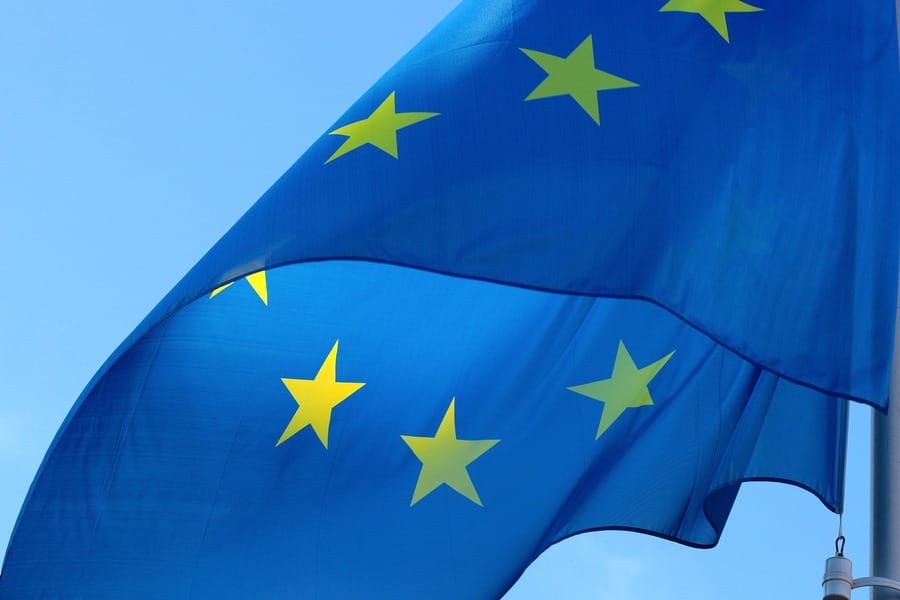Imagine a whimsical European vacation… bouncing between London and Paris via train, devouring delicious Greek dishes in Athens, reviling in a music festival in Berlin, and taking in more historic sites in Barcelona than you can handle. It’s the stuff dreams are made of.
Except it can turn into a nightmare pretty quickly.
When I embarked on my first big road trip across Europe years ago, I ran into a big problem. Really big.
Everything I planned and booked relied on the Internet – my smartphone was a lifeline to the outside world - navigation map, travel agent, translator, currency converter, and more. But buying a local prepaid SIM card in each country just to obtain a few days of essential mobile Internet was exorbitant not to mention a huge waste of time. My limited hours were so precious, and I didn’t want to spend them in a mobile retailer, trying to work out the frustrating complexities of prepaid plans for each carrier.
And relying on a single SIM with roaming data was simply out of my price range.
So, I did the dumb thing. I said “stuff it” and went with no internet on my phone, instead, relying on public wifi hotspots at each stop. It was cheaper, but I ended up in a world of pain over and over again. The stress was unbearable. Google Maps crashed and lost my route (before offline maps were a thing), I struggled to find last-minute accommodation, I couldn’t track down the nearest petrol station when the tank was almost empty, and reading signs in foreign languages was agonising.
I almost tore my hair out.

Fortunately, the telecommunications industry has evolved a lot since then and there are exciting, new options available today that will make your trip to Europe smoother and easier than ever before.
The most important development is the international eSIM for travel. Yep, you can use a single affordable data plan to reliably roam across dozens of countries in Europe without the need for physical SIM switching.
Let me explain a bit more.

eSIM vs Physical SIM?
Physical SIM cards have been around since 1991. This increasingly smaller plastic and gold card is inserted into your phone so the carrier knows who you are and can route voice, text, and data to your device.
eSIM, on the other hand, has only been around since 2017. This is a software-based alternative to supersede the old physical cards. It does the same job, just without a piece of removable plastic. The benefit? Switching between carriers is now as easy as pushing a button or scanning a QR code. Not to mention it’s more environmentally friendly.

Why Buy an eSIM for Europe?
I think you can understand why buying multiple physical SIM cards for each country you visit in Europe is a bad idea. There are now physical SIM card options that roam across multiple regions, however, it can mean removing your “home” SIM card.
A travel-friendly eSIM allows you to keep your “home” SIM active while utilising a second active connection in Europe. This can be useful for receiving phone calls from your regular phone number while using a separate Europe data plan from a different carrier.
It’s important to point out that travellers from outside the European Union may find very high charges for data roaming from your home carrier. An eSIM plan designed for Europe will automatically connect you to the best carriers at a fixed low price. No nasty surprises.

Phones Compatible with a Europe eSIM
The number of handset models that support eSIM is growing each year. Check this page for a complete list of phone, tablet, and laptop models that support eSIMs.
The first smartphone models that supported eSIM were Google Pixel 2, iPhone XS/XR, and Samsung Galaxy S20. iPhone 13 supports 2 active eSIMs at the same time, whereas most others support just 1.
Almost all of these devices support dual SIM so you can either have multiple physical SIM cards or 1 physical plus at least 1 eSIM.
Before you switch SIM cards, ensure your device is unlocked. Phones purchased from carriers at a small (or no) upfront cost are often locked to the network to ensure the carrier makes money out of you. To find out if your phone is locked, either try to call your carrier’s helpdesk or borrow a friend’s SIM card if they are on a different network. Here are instructions for alternative methods for checking your phone’s network lock status.

Countries in Europe that Support eSIM
Currently, you can use an eSIM in the following European countries: Armenia, Austria, Belgium, Bulgaria, Cyprus, Czech Republic, Denmark, Estonia, Finland, France, Georgia, Germany, Greece, Hungary, Ireland, Italy, Jersey, Latvia, Liechtenstein, Lithuania, Luxembourg, Malta, Netherlands, Norway, Portugal, Romania, Slovakia, Slovenia, Spain, Sweden, and United Kingdom.
Double-check your selected eSIM provider as the supported countries will vary slightly. For example, some eSIM providers include micro countries and non-continental regions/territories (such as Martinique), or even the USA – chances are you won’t need that if you’re sticking to continental Europe. But this is when it helps to know your travel plans ahead of time rather than leaving them to the last minute.

Compare the Best eSIM Plans for Europe
Now that you’re ready to buy a prepaid eSIM for your upcoming trip to Europe, which provider should you choose? A number of eSIM providers compete for your business and their prices are very reasonable. I’ve compared the best to save you time – looking through their fine print, crawling over their websites for answers in FAQs, testing their online purchasing flow, and sifting through customer reviews.
The most important aspect of each eSIM plan is the amount of data available (measured in GB) and the length of validity (in days). But also remember to check the list of compatible devices. Personally, I’m fine with no voice and text service on a relatively short trip (1 month or less) – data does the job in conjunction with WhatsApp or Skype.
Here are the best prepaid Europe eSIM plans and providers:
Recommended:
- New in June 2022: now supports unlimited data plans & eSIM top-ups (first in the industry!)
- Includes: data only
- Compatible with: iOS and Android
- Hotspot tethering: no for most locations, as of June 2022 due to unlimited plans (see FAQ)
- European countries: 40
5 days, unlimited: $19
10 days, unlimited: $34
15 days, unlimited: $47
20 days, unlimited: $54
30 days, unlimited: $64
60 days, unlimited: $84
Comment: best balance between worry-free data allowance and low pricing, and the only option for power users with unlimited data usage. No need to keep checking your usage!
Discount: Save 5% on Holafly's eSIMs with our exclusive code "TRAVELWITHBENDER".
Others:
Gigsky
- Includes: data only
- Compatible with: iOS, Google Pixel
- Hotspot tethering: supported
- European countries: 37
15 days, 1GB: $8.99
30 days, 5GB: $39.99
Comment: ok for very light data usage, but easy to run out of data and not compatible with all Android devices
iFree Mogo
- Includes: data only
- Compatible with: iOS and Android
- Hotspot tethering: supported
- European countries: 39
30 days, 3GB: $25
60 days, 5GB: $40
90 days, 10GB: $80
Comment: ok for ultra-light usage over a longer period
Not Recommended:
Ubigi - unreliable support.
Simify/SimsDirect - they use underhanded marketing techniques and engage in dishonest business practices.

How Much Data do I Need in Europe?
Each person is different, and the way you use your phone might vary from the next traveller. I’ve been able to ration my phone’s data usage to as low as 2GB per month when I’m very careful. But it’s not much fun. 6-10GB per month offers a lot more freedom.
- Light users will just browse social media and post the odd image of munching a croissant in front of the Eiffel Tower. 100-400MB of data per day should suffice.
- Mid-range users might download large app updates, browse lots of high-quality images on social media, and stream travel videos on YouTube, so data usage can add up very quickly. Between 300-500MB of data per day should be enough for most travellers.
- Heavy users may tether a laptop and download large attachments for work, or run offsite backups. That could drive up data usage to 500-800MB per day.

Important Europe eSIM Hacks
Can an eSIM be activated abroad?
Most decent eSIM providers allow you to purchase and activate your plan instantly wherever you are. Even better when it’s via an app or a QR code on a website. But just check the details of the activation process as it might require sending you an SMS, and if you do not have roaming activated from your home SIM (or it’s expensive) then you could get stuck.
Don’t delete eSIM if the data plan expires
Check the provider’s policy on deleting the eSIM. Typically, when your data plan expires your actual eSIM is still valid, at least for a period of time. So don’t delete it in case you want to use it again in the future.
Keep an eye on your data balance
You might be used to a large or an “unlimited” data allowance on your home SIM, so tracking your data usage might feel a bit foreign. It’s a good habit to get into. That way you won’t be stuck on a sightseeing tour without any connection to the outside world. Find out how to track your data usage on iOS or Android.
Check the fine print of your home SIM
No one wants “bill shock”. Get familiar with your phone so you know how to activate a specific SIM/eSIM. If your home SIM provides cheap (or free) call/text roaming then it would be worth keeping that active while also using your Europe eSIM just for data. Follow these steps for configuring multiple SIMs on iOS and Android.
Minimise data usage
There are a few easy ways to cut back on your phone’s data usage: temporarily turn off automatic app updates (or only update over wifi), minimise video chat use, limit YouTube/Netflix use, and cache Google Maps for offline use. Also, try turning on data usage limits to receive a notification when you get close to using up your allowance.
The Bottom Line
A European vacation is the perfect time to relax and unwind while experiencing new cultures and delicious food, not to mention delving into fascinating history.
eSIM technology reduces the hassles of switching SIM cards, and saves time tracking down physical mobile retailers in a foreign country. You’ve probably spent a lot on your upcoming European vacation, so don’t waste a single minute of it.
Simply choose my go-to eSIM provider, Holafly, and your trip to Europe will be one to remember… in a good way.












Reader Comments...
"I respond to every comment by direct private email. I look forward to your feedback" - Josh BenderNice blog thank you for sharing this information
Thanks for sharing
Holafly does NOT support hotspot.
HOLAFLY does NOT support roaming.
Write Your Comment
Please DO NOT include links, URLs or HTML in your comments - they will be automated deleted and you will waste your time.